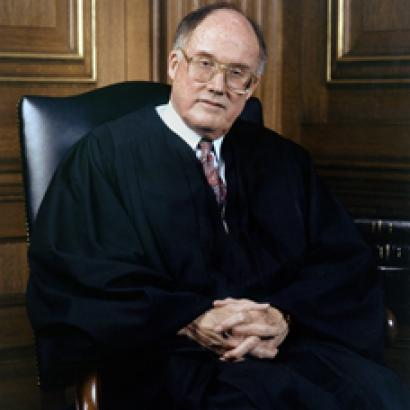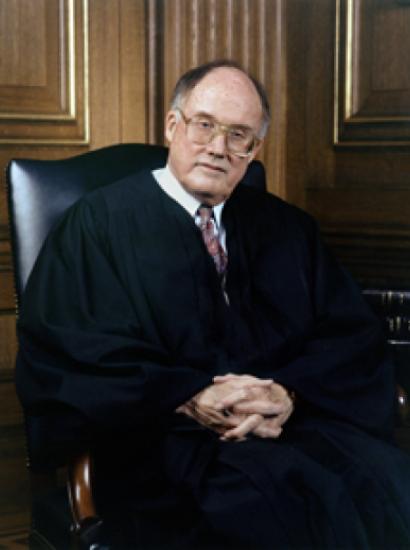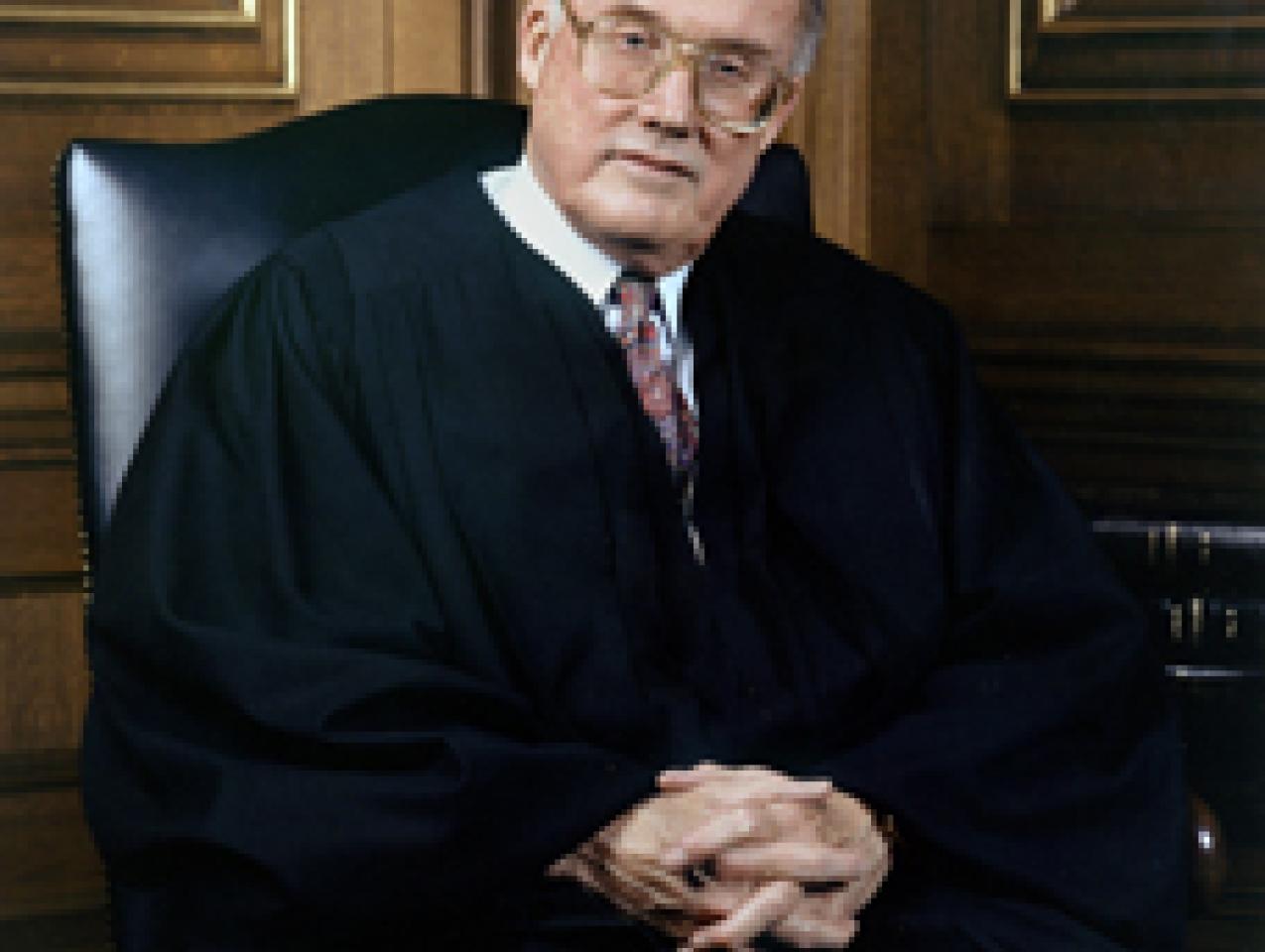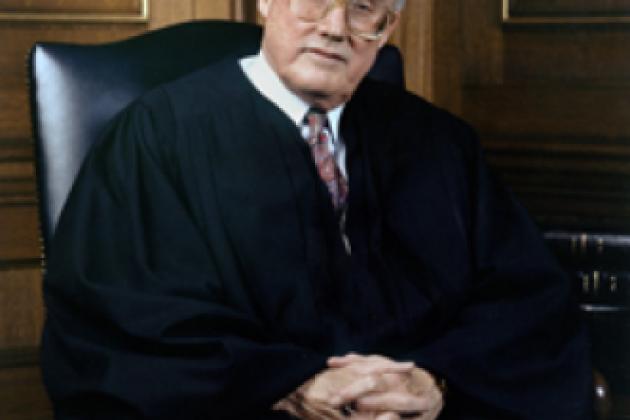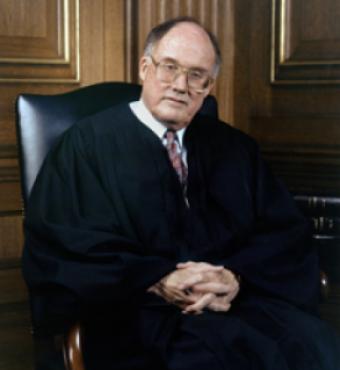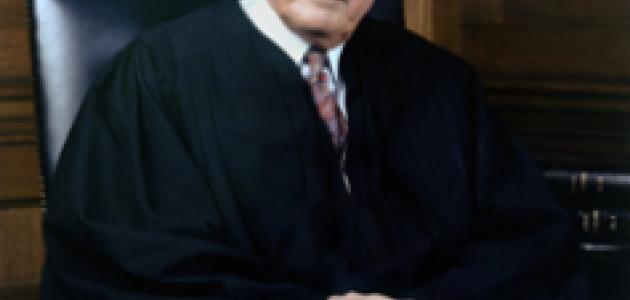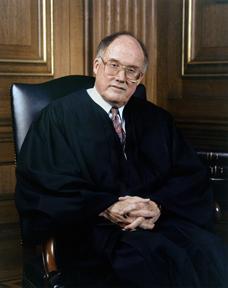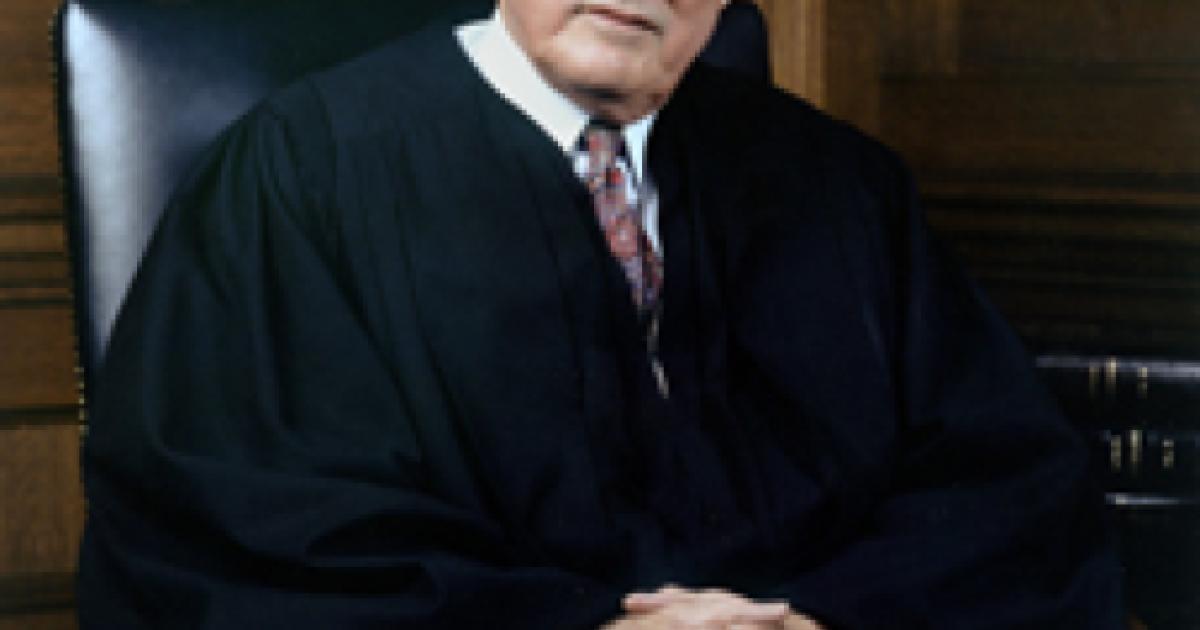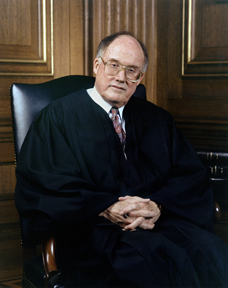
The papers of the late William H. Rehnquist, Chief Justice of the United States from 1986 until his death in 2005, have been donated to the Hoover Institution Archives at Stanford University. Rehnquist, an alumnus of Stanford, received three degrees from the university, including his law degree, and, before ascending to the Supreme Court, was a member of the Hoover Institution Board of Overseers.
John Raisian, the institution’s Tad and Dianne Taube Director, in making the announcement said, “This is a major acquisition for the Hoover Archives; it complements our collections from the judicial, executive, and legislative branches. Chief Justice Rehnquist’s collection will enhance Hoover’s reputation as a major repository for materials on the U.S. government during the latter part of the twentieth century, and we believe researchers will find it to be an important resource for examining judicial decision making covering the Chief Justice’s more than thirty years on the Supreme Court. We are pleased that Chief Justice Rehnquist’s papers are coming full circle back to Stanford, where he began his illustrious legal career.”
Raised in Milwaukee, Wisconsin, where he was born on October 1, 1924, Rehnquist served in the U.S. Army Air Force in North Africa during World War II. After the war, he attended Stanford on the GI Bill, where he earned his undergraduate and law degrees (graduating at the top of his Law School class, which included his colleague-to-be Associate Justice Sandra Day O'Connor). While attending Stanford, he met his future wife, Natalie, also a Stanford student.
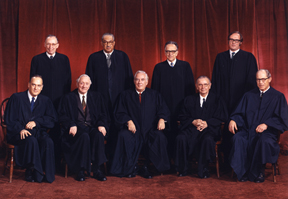
Official group photo taken August 5, 1972.
Photo by Robert Oakes, National Geographic Society,
Courtesy the Supreme Court of the United States.
Rehnquist served as a law clerk to Justice Robert H. Jackson on the U.S. Supreme Court during the 1951 and 1952 terms. He practiced law in Phoenix, Arizona, from 1953 to 1969 and served in the U. S. Department of Justice as Assistant Attorney General, Office of Legal Counsel, from 1969 to 1971.
Rehnquist was nominated to the Supreme Court by President Richard Nixon and took his seat as an associate justice on January 7, 1972. President Ronald Reagan nominated Rehnquist Chief Justice, a position he assumed on September 26, 1986. A statement from the Rehnquist family said that “we are pleased to donate our father's papers to Stanford University's Hoover Institution. Stanford is where our parents met as college students, and, though they spent their last decades in Washington, their hearts were always in the West.”
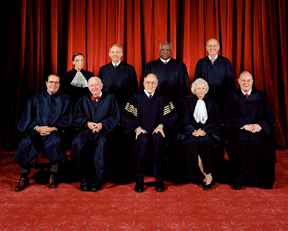
Official group photo taken December 5, 2003.
Photo by Steve Petteway, Collection of the
Supreme Court of the United States.
As Chief Justice, Rehnquist led the private conferences where he and his colleagues discussed and voted on cases; when deciding with the majority, assigned the writing of majority opinions; managed the docket; controlled open-Court arguments; oversaw the Court’s various employees; and served as presiding officer of the Judicial Conference of the United States. In his capacity as Chief Justice, he was also chancellor of the Smithsonian Institution.
He was respected by his colleagues for reducing the number of cases the Court agreed to hear, streamlining conferences, and seeking clear, strongly reasoned opinions. In 1999, Rehnquist became only the second Chief Justice in history to preside over a presidential impeachment hearing (that of President Bill Clinton). Rehnquist’s thirty-three years on the Court were exceeded by only seven other justices in history.
His extensive collection includes case-related materials, speeches, personal correspondence, drafts and notes on the many books he authored, and in-chambers correspondence among the justices. Portions of the collection will remain closed indefinitely, but, once processed by Hoover’s archivists, some sections of the collection will be made available to researchers.
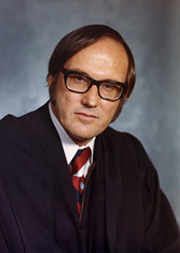
Official portrait of Justice
Rehnquist taken in 1972.
Photo by Bob Oaks,
National Geographic Society,
Courtesy the Supreme Court
of the United States.
Selected personal material, memorabilia, and artifacts have been sent to the Rehnquist Center at the University of Arizona.
The Hoover Institution Archives is a core component of the Hoover Institution. Originally a repository for documentation on World War I, the archives grew to encompass the records of the fascist, communist, and nationalist movements that precipitated World War II. Today, the collection encompasses persons and political movements from around the world, in both the twentieth and twenty-first centuries. The more than five thousand separate collections in the Hoover Institution Archives include millions of individual documents.




